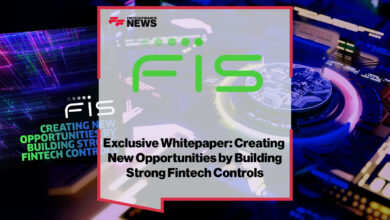Five Things to Watch as Synapse Bankruptcy Shakes Up FinTechs

At this writing, on Tuesday (May 28), the ripple effects of Synapse’s bankruptcy keep rippling. But with each filing, with the reports that customers can’t retrieve their money, that sponsor banks and other FinTechs have walked away from relationships with the funds … and even that other firms are facing existential threat, there’s one theme that’s emerging:
The interconnectedness of it all.
At almost every level, the banking-as-a-service (BaaS) model may be sorely tested.
Less than two years ago, as detailed in this space, Synapse, which among other offerings provided U.S. checking accounts to clients, had been eyeing expansion in Latin America and India. Back in 2019, and in previous years, the company had raised $33 million in a Series B funding round that was led by Andreessen Horowitz and existing investors Trinity Ventures and Core Innovation Capital.
Fast forward to April of this year, and the company filed for Chapter 11 bankruptcy, struck a deal to be acquired by TabaPay, and then the $9.7 million deal to be bought out was gone seemingly as quickly as it had materialized.
Court filings note that Synapse exists as “one of the first, if not the first, tech company to pioneer a Banking as a Services (Baas) platform for fintechs and Partner Financial Institutions which have agreements … to efficiently interface each other to allow for transactions (i.e., the buy and sell) of their financial products and services to the fintechs’ end users.”
Will the Direct Model Prevail?
The middleman territory seems tenuous. Synapse had been acting as the intermediary between Evolve Bank & Trust (PYMNTS has reached out to Evolve for comment) and the business banking FinTech Mercury – but the two firms struck a deal to work with each other directly, ending the use of Synapse as middleman.
As PYMNTS has reported — and even before the events that have been shaking up BaaS — embedded banking firm Treasury Prime said it was shifting its model.
“For years, we’ve been saying that the future of banking is embedded, with regulated institutions and technology firms working closely together to deliver critical financial services within new channels and apps,” CEO Chris Dean wrote in announcing the shift in February.
“However, it’s become increasingly clear to me that the future of embedded banking is through bank-direct, FinTech partnerships. The market is settling on this model, and it’s happening fast.”
Treasury Prime announced the rollout of out a “Bank-Direct” product, which lets banks handle the entirety of their relationships with FinTech clients. Though not necessarily what we might think of as a “pure” middleman — Treasury Prime had acted as an aggregator linking FinTechs to several banks — the pivot speaks to a general reconsideration of what BaaS might mean going forward.
Customers as Casualties?
Though Synapse is in Chapter 11, several media sources have noted that a conversion to Chapter 7 may be an eventuality — which would lead to a liquidation of the firm. The specter of liquidation, we note, raises the questions on what can be recovered, and how long it all will take … and what will happen to customers who relied on the interconnected relationships between Evolve and Synapse.
One key example here is Mainvest, which brought small businesses and investors together via its online platform. The company is winding down operations, and said in a statement on its website that “Due to the ongoing dispute between Evolve Bank and Synapse, all payment processing on Mainvest is currently unavailable including withdrawals and bank linkage.”
Copper, another FinTech that relied on Synapse, has announced it will discontinue at least some of its offerings, including bank deposit accounts and debit cards. In terms of the expanded ecosystem, it’s estimated that Synapse’s roughly 100 FinTech partners have 10 million end customers.
Regulators in the Wings
There’s a certainty here: Regulators are going to take a closer look at the role third parties play in connecting banks and FinTechs — and what the ultimate risk frameworks and liabilities will be.
The Consumer Financial Protection Bureau (CFPB), which has just been given the go-ahead to keep, well, going ahead by the Supreme Court, will loom large here, given reports that individual customers have been unable to access funds, as their accounts have been frozen.
The question is also far from settled as to who ultimately will regulate the FinTechs — middlemen and other players operate, arguably, in a gray area where they’re not governed by the FDIC or the central bank, because the digital-only players are not, in fact banks.
In at least some instances, as individual customers are affected, and as accounts are frozen and unfrozen, the question is whether backstops will be necessary if the various firms are not able to trace who owns what, and in which accounts.
Also at issue: What happens to sponsor banks, which are also likely to see more oversight. These banks, which in turn provide services to FinTechs, may face a chill as well — chiefly as to whether they will “bank” FinTechs amid all this uncertainty.
Synapse has claimed that Evolve is responsible for a $50 million shortfall in end user funds. Elsewhere, as seen earlier this year the FDIC entered consent orders against two banks, Sutton Bank and Piermont Bank, focused on issues with third-party relationships and banking-as-a-service activities — and how the banks oversee third-party risk.
Funding It All
As recently as last month, CB Insights noted that FinTech funding was down 16% quarter over quarter, as measured from the first three months of this year. Overall venture capital deal-making (across all sectors, not just FinTech) is at a seven-year low, and the bright spots within FinTech remain concentrated in digital health firms and retail. It might not be far-fetched to think that BaaS will draw caution from would-be investors as the sector continues to shake out.



